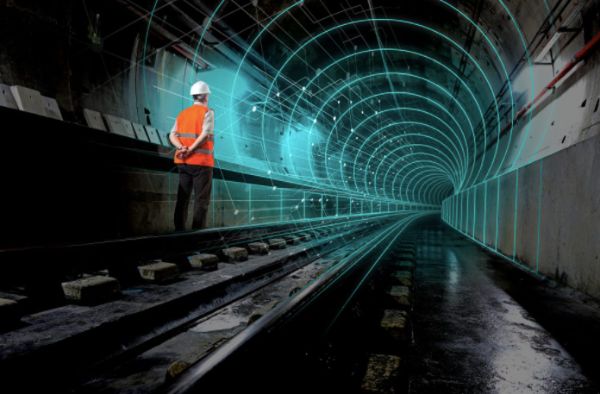Advances In Construction Long Overdue

While the manufacturing, healthcare, and technology sectors have embraced technological advances and refined their processes, construction has lagged behind, but Digital Twin technologies could be the solution.
To achieve sustainable infrastructure, construction must adopt new technology and materials, the United Nations Environment Program reports.
Its latest report reveals that the construction sector accounts for 38% of all energy-related CO2 emissions, increasing in 2019 to their highest level yet at around 10 GtCO2, and is failing to slow Climate Change or contribute to the 2016 Paris Agreement sustainability goals.
This contrasts with the manufacturing, healthcare, and technology sectors, which have embraced technological advances and refined their processes; these industries would be unrecognizable to a worker 50 years ago, but construction has not evolved anywhere near this pace, the report finds.
Half of all existing US buildings were built between 1960 and 1999, with 21% made before 1960. These buildings are poorly insulated and energy inefficient. As a result, buildings contribute 40-70% of overall emissions in cities.
Research from the Saïd Business School at Oxford University also shows that 90% of the world’s infrastructure projects are either late or over-budget. Berlin Brandenburg Airport was nine years late on completion and six times over budget, with 66,500 errors cited during construction. Such mistakes leading to higher construction times are due to lack of data and also cause higher emissions per project.
Paul Dunn, director of global architecture company CallisonRTKL, believes integrated technology and Digital Twins are the solutions.
“To achieve transformational change in our industry, design, technology, and construction must be fully integrated,” he says.
“The industry must go further in embracing digital, advanced materials and new technologies.”
“Technology and manufacturing will help evolve our buildings as products. We are living at a time when flawless quality is truly viable when digital models and simulations with real-world building data create endless possibilities for monitoring, machine learning, and human-centered design. We must secure integrated whole-building design from inception to afterlife.”
Digital Twins act as a collection of digital data representing a physical object, allowing the construction industry to use advanced 3D models connected to AI-driven analytics to better measure, predict and mitigate a building’s emissions output.
Applying Digital Twins during construction can allow planners and builders to streamline the building process and avoid additional construction hours, costs, and emissions on projects.
A recent Market’s and Market’s report estimates the Digital Twin market would grow from $3.1 billion in 2020 to $48.2 billion per year by 2026, at an annual CAGR of 58%
Some office spaces and city buildings closed during lockdowns last year adopted Digital Twin technology, gathering previously unknown data. Jim Whittaker, Engineering Services Lead at real estate world leader JLL, believes the COVID-19 pandemic is accelerating Digital Twins’ adoption. He states it’s now critical for building owners to rethink how their properties are used and managed.
“Objective and credible data has always been needed to make decisions on property portfolios and inform investment decisions,” he explains.
“But agile, scalable, and dynamic workplaces are needed now more than ever. Digital Twins support these requirements by providing the data and visualizations needed to make more rapid and flexible decisions.”
Leading Digital Twin provider Cityzenith’s CEO Michael Jansen also understands the importance of transforming the construction industry while reducing urban carbon emissions.
“The sector must catch up with the pace of emissions reduction in other industries such as manufacturing. Powerful Digital Twin modeling by software can manipulate huge amounts of data to enable smooth and accurate ‘right first time. And on time’ construction on new projects and help retro-fit older buildings to cut emissions now and in the future.
“We are already working with major cities worldwide, donating our SmartWorldOS as part of our ‘Clean Cities – Clean Future initiative.
“Cities and urban areas are responsible for 70% of global emissions, and the construction industry contributes significantly to this percentage. With the impact of Climate Change looming, it is time to utilize Digital Twins within construction, modernize the industry and reduce emissions output”.


 Bill Bennett: Download Weekly - Review Of 2024
Bill Bennett: Download Weekly - Review Of 2024 Bill Bennett: One NZ scores worldwide first as Starlink direct-to-mobile launches
Bill Bennett: One NZ scores worldwide first as Starlink direct-to-mobile launches Hugh Grant: How To Reduce Network Bottlenecks
Hugh Grant: How To Reduce Network Bottlenecks Dominion Road Business Association: Auckland Transport's 'Bus To The Mall' Campaign: A Misuse Of Public Funds And A Blow To Local Businesses
Dominion Road Business Association: Auckland Transport's 'Bus To The Mall' Campaign: A Misuse Of Public Funds And A Blow To Local Businesses Parrot Analytics: A Very Parrot Analytics Christmas, 2024 Edition
Parrot Analytics: A Very Parrot Analytics Christmas, 2024 Edition Financial Markets Authority: Individual Pleads Guilty To Insider Trading Charges
Financial Markets Authority: Individual Pleads Guilty To Insider Trading Charges



